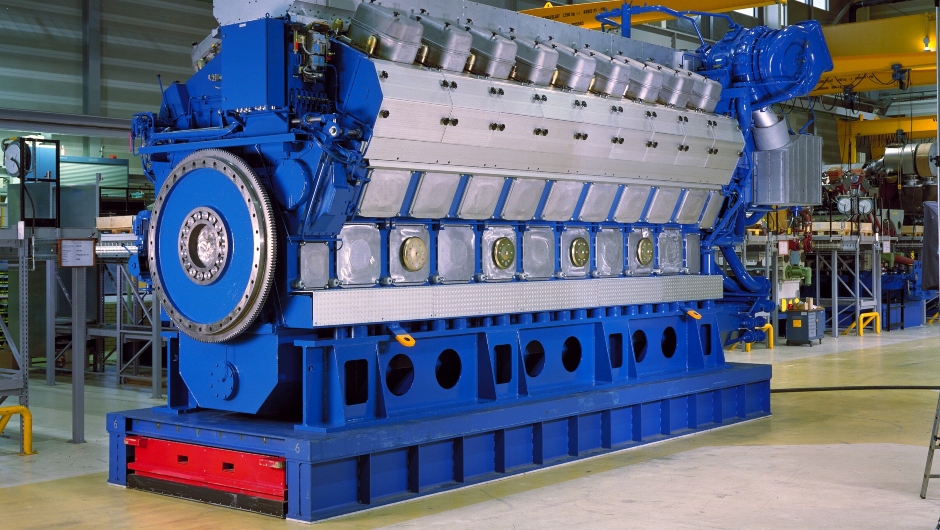
Ramping up treasury robotics

Wärtsilä’s treasury team not only saved millions through automation, but served as a robotics evangelist for the entire engineering group.
The treasury team at Finnish power equipment manufacturer Wärtsilä, which earned more than €5 billion in revenue last year, has always focused on maximising efficiency. Having previously implemented SAP automation at its shared service centre (SCC), by 2016 the team judged that this had been taken as far as it could go without the expense becoming prohibitive.
Its decision to pioneer the use of Robotic Process Automation (RPA) in treasury and the SCC has seen the technology adopted throughout the group subsequently.
From the SCC to the factory floor, Wärtsilä as a whole now operates nearly 400 RPA processes. “It’s been a very exciting journey. RPA is part of our DNA nowadays,” says Anu Hämäläinen, Vice President, Group Treasury and Financial Services.
Strikingly, Wärtsilä used no consultants either in its adoption of RPA or in its migration of functions out of SAP to the new system. Self-sufficiency has enabled treasury/SCC to avoid more than €3 million in development costs, while automating millions of transactions and avoiding human error.
In 2018 alone its treasury/SCC RPAs worked 156,000 hours. Its small team (eight treasury professionals plus SCC staff) would have needed more than 80 full-time employees just to get through this workload.
Moreover, it has developed a culture of ‘Citizen Developers’. While it employs 11 full-time robotics developers, it also draws on a broader group of as many as 120 process owners able to code robots too but whose main responsibilities lie elsewhere.
Treasury traction
Having first looked into the technology some years earlier and found it too immature, the treasury team under Hämäläinen began to explore it in earnest in 2016. “RPA was a completely new angle, methodology and tool in this space and provided us unlimited possibilities in the efficiency play. We quickly understood that with RPA we can achieve much more than with traditional ‘inside-application’ automation or integrations,” says Jarmo Nurmi, Manager, Cash Management, Group Treasury and Financial Services.
Wärtsilä selected UiPath as its RPA provider and created an RPA Centre of Excellence. The initial goal was to automate three treasury processes by the end of the year, but it managed 13.

One of the earliest breakthroughs was confirmations for intra-group loans and deposits. Not only are these now sent automatically, but the robot also logs them and updates their status in an Azure database (and sends reminders to group companies).
Similarly, a robot prompts group companies about maturing FX and money market transactions and requests their instructions to the treasury front office. Another will soon send monthly accrual and mark-to-market valuation reports.
In each of these cases, RPA eliminates human error and frees treasury professionals to work on less repetitive, more value-added tasks.
At its recent peak, the Finnish engineering firm was running as many as 26 treasury processes robotically, plus a raft of so-called ‘one-time robots’ (those coded for individual investigations of data that would take longer to pursue manually). It has also automated many additional SCC tasks.
These include allocation of credit notes to invoices in SAP payment run proposals, monitoring of and email reminders from invoice validation and approval workflow and accrual posting of parked invoices.
The team is now rewriting some of its treasury robots following its recent implementation of a new Quantum treasury management system. Its use of RPA didn’t influence the choice of TMS, but allowed it to avoid having customised features built in Quantum.
The group is continuing to grow its treasury/SCC robots. Its pipeline targets 25 processes in the credit control and collection area alone, for example. It is also exploring the use of RPA in managing its bank guarantees, supply chain finance and receivable sales.
Like Excel
Although Wärtsilä initially encountered scepticism over its in-house strategy, its success has vindicated its approach. “In the beginning nobody believed we could do it like this, but it’s like Excel to us today,” says Nurmi.

The company contrasts its open, flexible approach to embedding robots into its treasury and finance processes (as well as other support functions) with the centralised route taken by many peers. “That involves all kinds of formalities. But to us it is the process owner who knows best what is needed,” he notes.
“We never say ‘you can’t build this with RPA’. Instead RPA is considered as the first alternative,” adds Hämäläinen. “Letting key users experiment RPA and gain expertise by automating processes is our conscious choice to invest into the competences of our people.”
One striking consequence of this has been that users have been liberated to reshape treasury and finance processes if this enables their automation or makes it more efficient or easier to build. “That can make them more suitable and give a better end-result,” Nurmi believes.
A high degree of autonomy has accompanied this deep integration. “Would you need approval to implement a macro in your spreadsheet?” he asks, rhetorically.
Even so, it also emphasises appropriate governance. “We leave room for creativity, but we aren’t reckless. We have governance models in place. People have to take responsibility for fixing their robot if it can no longer handle its task – for example, if the system has changed because of an upgrade,” he comments.
Advanced tech
Success with RPA has encouraged Wärtsilä to take steps towards more advanced technologies. “There are already the first implementations of artificial intelligence and machine learning in our shared service center. We also pilot process mining in order-to-cash and purchase-to-pay processes, and explore opportunities in other automation platforms,” Nurmi adds.
Hear more from Wärtsilä and all our other EuroFinance Award Winners at International Treasury Management in Copenhagen
